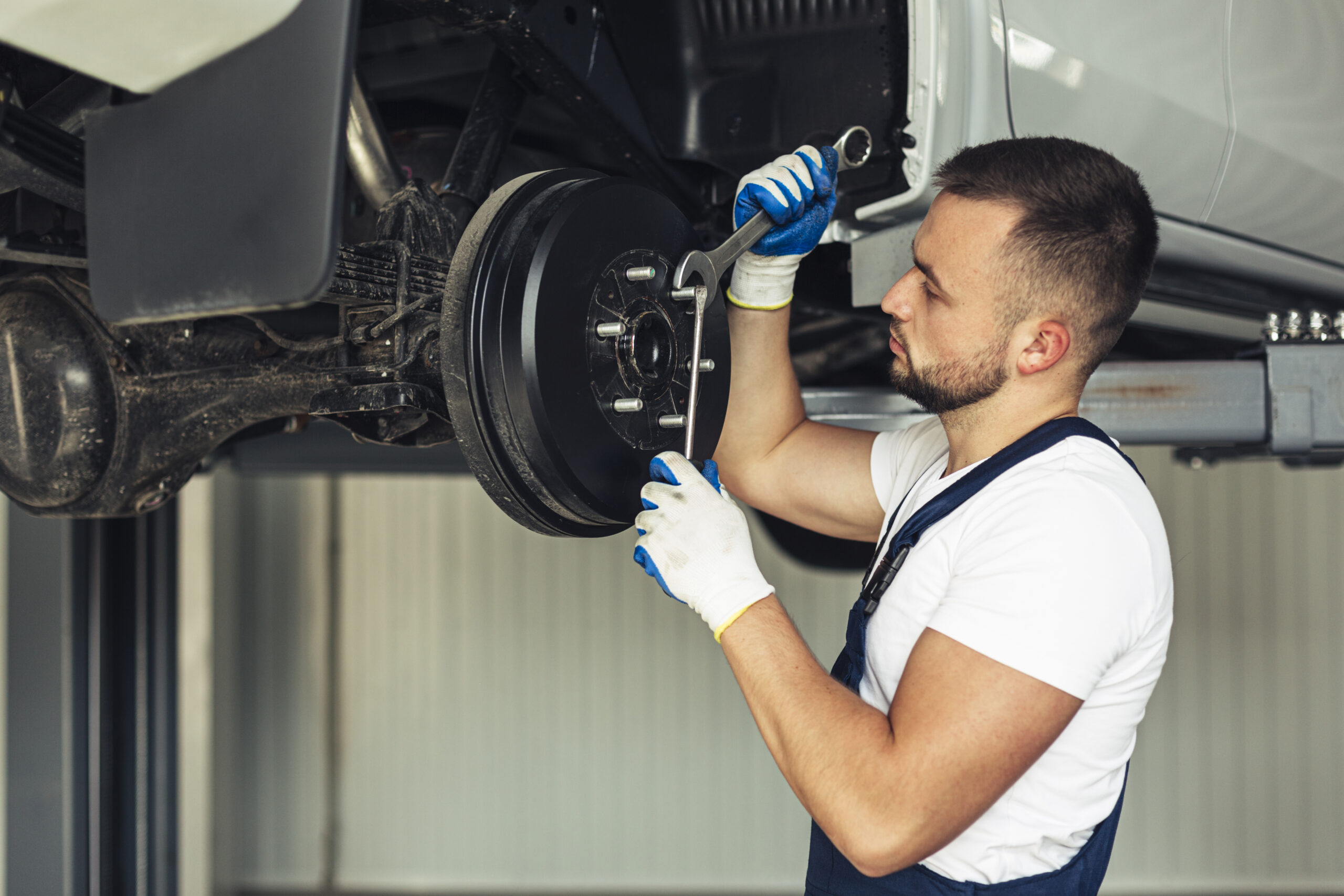In the complex world of automotive mechanics, few systems are as critical to your safety as the braking system. It’s a marvel of engineering, a high-performance composite system that transforms your foot’s pressure into the force needed to stop a multi-ton vehicle.
When you press the brake pedal, you activate a mechanical and hydraulic chain reaction. This action sends brake fluid through lines to the calipers, which then squeeze the brake pads against the spinning rotors. This friction is what slows and ultimately stops your car. Given this vital function, the importance of maintaining your brakes cannot be overstated.
Neglecting your brakes can lead to catastrophic failure, endangering not only yourself but also others on the road. Proper maintenance ensures that your braking system remains efficient and responsive, allowing you to react safely in any situation. A well-maintained system prevents costly damage to other components and provides peace of mind.
- Safety Assurance: Maintaining your brakes is non-negotiable for road safety.
- Cost Efficiency: Timely repairs prevent more expensive damage to rotors and other parts.
- Optimal Performance: Well-maintained brakes ensure consistent and reliable stopping power.
- Vehicle Longevity: Regular checks contribute to the overall health and lifespan of your car.
5 Signs You Need to Repair the Brakes
1. Unusual Noises: Squealing, Squeaking, and Grinding
The first and most common sign of brake trouble is an unusual sound. When you apply the brakes, a high-pitched squealing or squeaking noise often indicates that your brake pads are wearing thin. This sound is not a random occurrence; many modern brake pads are manufactured with a built-in metal wear indicator.
This small tab begins to make a high-pitched noise when the pads are worn down to a critical level, serving as an early warning to have them inspected and replaced before more serious damage occurs.
If you ignore the squealing, the sound will likely escalate to a harsh, metallic grinding. This is a far more serious warning. A grinding sound means that the brake pads have been completely worn away, and the metal backing plate is now directly rubbing against the metal rotor. This not only significantly reduces your braking ability but also causes severe damage to the rotors, leading to a much more expensive repair.
For example, hearing a light screech when you first apply the brakes is a cue for a mechanic’s visit, while a heavy grinding noise means you should stop driving the car immediately and have it towed to a repair shop.
2. Vibration or Pulsation in the Pedal
Feeling a vibration or pulsation through your brake pedal or steering wheel when you apply the brakes is another clear sign of a problem. This sensation is often caused by warped brake rotors. Rotors can become warped due to excessive heat from aggressive or prolonged braking, such as driving down a steep hill. When a rotor is no longer perfectly flat, the brake pads are unable to make smooth, even contact, causing the vibration you feel.
This pulsating sensation can also be a sign of uneven brake pad wear, which can cause an inconsistent and jarring stop. While the vibration may seem minor, it compromises your car’s ability to stop smoothly and effectively. Ignoring this can lead to a longer stopping distance and further damage to your braking system.
For instance, if you are driving on the motorway and begin to brake from a high speed, a pulsating sensation in the pedal is a strong indicator that your rotors are warped and need to be resurfaced or replaced.
3. Spongy, Soft, or Low Brake Pedal
A brake pedal that feels spongy or soft, or one that sinks closer to the floor than usual, is a significant red flag. A properly functioning brake pedal should feel firm and responsive. A soft or mushy feel suggests a loss of hydraulic pressure within the braking system. This can be caused by air trapped in the brake lines, a brake fluid leak, or a failing master cylinder. The master cylinder is the heart of the hydraulic braking system; if it’s not functioning correctly, the fluid isn’t being distributed properly to the brakes, compromising your stopping power.
Similarly, if you have to push the brake pedal nearly to the floor to get the car to slow down, it could indicate critically low brake fluid or severely worn brake pads. This increased travel distance means there’s a problem with the system’s ability to generate the necessary pressure.
For example, if you are in a parking lot and find that your brake pedal goes almost to the floor before the car starts to slow, it’s a serious sign that you have a major brake fluid issue and should not drive the car.
4. Vehicle Pulling to One Side When Braking
If your car veers or pulls to one side when you apply the brakes, it’s a sign of an imbalance in the braking system. This can be caused by a number of issues, including a stuck caliper, a collapsed brake hose, or unevenly worn brake pads.
A stuck caliper, for instance, may be applying too much pressure to one wheel, causing that side of the vehicle to slow down more rapidly than the other. Conversely, if one of your calipers is failing to engage properly, the braking force will be unevenly distributed, causing the car to pull towards the side with the functioning brake.
This issue not only makes your car unstable during braking but also can lead to uneven tire wear and premature failure of other braking components. For example, when you apply the brakes at a stop sign and your car consistently drifts to the left, it could be an indication of a problem with the brake on the right side, such as a seized caliper or a clogged brake line.
5. Brake Warning Lights on the Dashboard
Your car’s dashboard is equipped with a sophisticated system of warning lights designed to alert you to potential problems. Two common brake-related lights are the standard brake system warning light (often a red icon of an exclamation mark inside a circle) and the Anti-Lock Brake System (ABS) warning light (usually yellow or orange with the letters “ABS”). The standard brake light can indicate a variety of issues, such as low brake fluid, a problem with the brake system’s pressure, or even a simple reminder that your parking brake is engaged.
The ABS warning light signals a malfunction in the anti-lock braking system, which is designed to prevent your wheels from locking up during a hard stop. While your brakes will still function without the ABS, your ability to steer during an emergency stop may be compromised. Both of these warning lights should never be ignored.
For example, if your ABS light comes on after you’ve been driving for a few minutes, it’s a signal that the system needs to be checked by a professional Brake Repair services provider as soon as possible, as it may not work when you need it most.
Read More:
The Top 5 Benefits of Regular Brake Inspections and Maintenance
In Conclusion
The braking system is a complex and crucial part of your car’s safety features. Recognizing the warning signs—from the subtle squeal of a worn pad to the dangerous pulling of your vehicle—is the first step toward preventing an accident. Regular inspections and prompt attention to these signs will ensure your car remains safe and reliable on the road, protecting you and your passengers. Never underestimate the importance of your brakes; they are your most important safety device.


